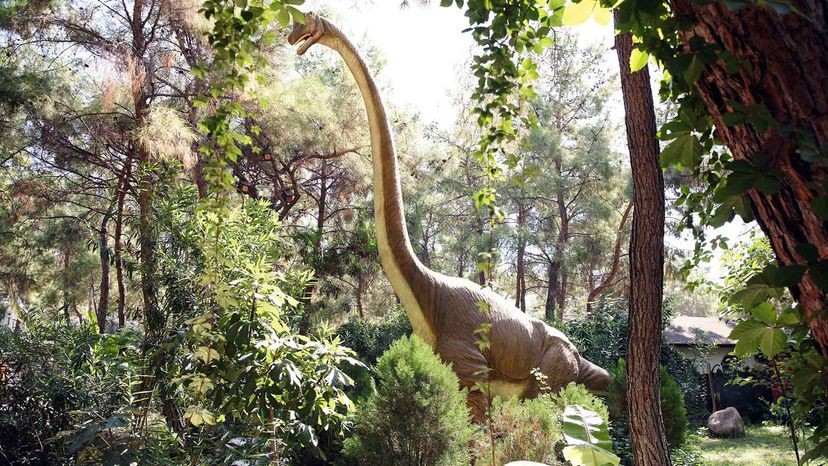Dinosaurs, like the towering Brachiosaurus, dominated prehistoric landscapes with their immense size. But why were these ancient creatures so much larger than animals we see today? Several fascinating theories attempt to explain this prehistoric gigantism.
Factors Contributing to Dinosaur Size
Scientists have proposed various hypotheses to explain the enormous size of dinosaurs. These factors, often interconnected, likely contributed to their impressive stature.
Higher Oxygen Levels
One prominent theory suggests that higher atmospheric oxygen levels during the Mesozoic Era played a crucial role. Analysis of ancient rocks reveals a significant increase in oxygen around the time dinosaurs first appeared. This abundance of oxygen could have fueled higher metabolic rates, allowing for larger body sizes. Increased oxygen may have also enhanced respiratory efficiency, crucial for supporting massive bodies.
Efficient Food Consumption
Sauropods, the largest dinosaurs, possessed remarkably long necks. This anatomical feature allowed them to access vast quantities of vegetation otherwise unavailable to other herbivores. This efficient foraging strategy, coupled with a digestive system adapted to process large amounts of plant matter, could have fueled their tremendous growth.
Evolutionary Arms Race: Cope’s Rule
Cope’s Rule, a paleontological principle, proposes that animal lineages tend to increase in size over evolutionary time. While not universally applicable, this trend is evident in certain dinosaur groups, particularly sauropods. An evolutionary “arms race,” where larger size provided advantages in competition and defense, could have driven this phenomenon.
Specialized Skeletal Structures
Some dinosaurs, like pterosaurs and Supersaurus, possessed lightweight bones and complex air sac systems. These adaptations reduced their overall weight without sacrificing structural integrity, allowing for larger body sizes without the constraints of excessive mass. These air sacs also likely contributed to efficient respiration, essential for supporting high metabolic demands.
Environmental Factors and Reduced Predation
A combination of abundant food resources, fewer predators at the top of the food chain, and a warmer climate may have created an environment conducive to gigantism. With reduced predation pressure and ample resources, dinosaurs could invest more energy in growth, leading to larger body sizes.
The Blue Whale: A Modern Giant
While dinosaurs hold a prominent place in the history of gigantism, the blue whale reigns as the largest animal on Earth today. Its massive size, exceeding even the largest dinosaurs, is facilitated by the buoyancy of the aquatic environment.
Conclusion: A Complex Interplay of Factors
The extraordinary size of dinosaurs likely resulted from a complex interplay of factors, including higher oxygen levels, efficient feeding strategies, evolutionary pressures, specialized skeletal structures, and favorable environmental conditions. While no single factor provides a complete explanation, the convergence of these elements allowed dinosaurs to achieve sizes rarely seen in the animal kingdom today. The ongoing research and discovery of new fossils continue to refine our understanding of these magnificent creatures and the forces that shaped their evolution.
